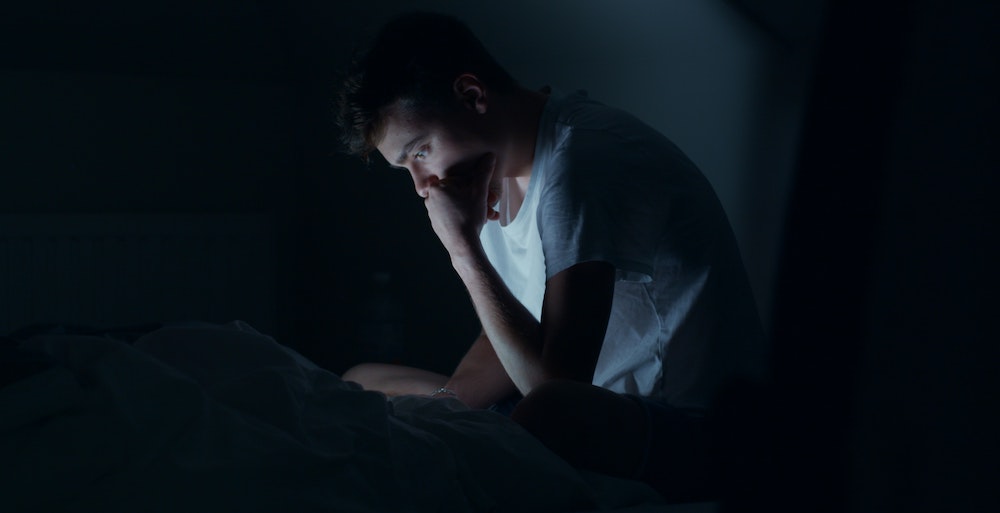All behaviors that become addictive or compulsive become cyclical in nature, with no clear beginning or end to the cycle and one stage leading to the next (and then the next, and the next, and the next). Over time, users find themselves stuck in an endless, downwardly spiraling loop. For a visual, think about a flushing toilet.
With porn addiction and compulsivity, various models of this cycle have been proposed. In 1983, Dr. Patrick Carnes provided the first of these in his book, Out of the Shadows. For the most part, he merely adapted that era’s most commonly accepted substance abuse cycle, broken into the following four stages:
- Fantasy (Preoccupation)
- Ritualization (The Bubble)
- Compulsive Behavior (Acting Out)
- Despair (Shame)
Over the years, this cycle has been modified and expanded upon, and there are now several versions, each with merit. With porn addiction and compulsivity, I generally prefer a six-stage model, shown below:

Stage One – Triggers (Shame/Anxiety/Depression/Other Strong Emotions):
Triggers are catalysts that create a need/desire to use porn. Most often triggers are some sort of ‘pain agent.’ Pain agents include both emotional/psychological and physical discomfort, either short-term or long-term. Depression, anxiety, loneliness, boredom, stress, shame, anger, and any other uncomfortable feeling can easily trigger a porn user’s desire to escape, avoid, and dissociate. Positive agents can serve as triggers, too. So if an addict gets fired from his or her job, he or she will want to use porn; and if that same addict gets a great new job, he or she will want use porn. Triggers can also be visual (seeing a sexy image on a billboard), auditory (hearing a noise that reminds the addict of pornography), or even smell, touch, or taste related. If triggers are not dealt with, the cycle inevitably slides forward into stage two.
Stage Two – Fantasy:
After being triggered in some way, individuals will automatically start thinking about how much they enjoyed past porn use and how much they would enjoy more porn either right now or in the near future. At this point, the user is preoccupied, perhaps to the point of obsession, with porn-related fantasies. And the user’s fantasies do not involve memories of bad experiences or unwanted consequences. Once the user is actively engaged in fantasy, it is very difficult to stop the cycle without some sort of outside intervention.
Stage Three – Ritualization:
Ritualization is where fantasy moves toward reality. This stage adds excitement, intensity, and arousal. For example, the user logs on to the computer and surfs social media and then hookup apps as a precursor to porn use. Real world issues and concerns steadily disappear as the user focuses more and more intently on his or her sexual fantasies.
Stage Four – Acting Out (Porn Use):
Along with ritualization, this stage of the cycle provides porn users with an escapist neurochemical high. Those who are addicted to or compulsive with pornography typically stretch this stage for many hours. They search for the perfect image or video before they decide to masturbate to orgasm. Heavy porn users sometimes refer to this as being in the bubble or the trance because they ‘lose themselves’ while searching for and viewing pornography. This, more than sexual gratification, is the true objective of addictive and compulsive porn use. Many such users put off masturbation and orgasm for as long as possible because orgasm ends the escapist high and tosses them back into the real world. Orgasm brings the high of porn addiction to an abrupt, screeching halt.
Stage Five – Numbing (Denial):
After acting out with porn, users attempt to distance themselves emotionally from what they’ve just done. Their denial kicks in full force as a way to temporarily protect them from the next stage.
Stage Six – Despair (Shame/Anxiety/Depression/Other Strong Emotions):
Eventually, numbing dissipates. When it does, users can start to feel ashamed and remorseful. Exacerbating these unwanted emotions is the fact that they also feel powerless to stop the cycle of porn use. In this way, stage six spins the self-perpetuating cycle right back to stage one.
Typically, the cycle of porn addiction and compulsivity intensifies with each repetition. Users require more of the same types of pornography or more intense forms of pornography to reach or maintain the desired neurochemical high. This transforms the cycle from a repetitive loop into, as mentioned earlier, a downward spiral leading to relationship, work, health, financial, legal, and other crises. And all of these crises can serve as triggers, setting the cycle in motion yet again.
Can the Cycle Be Stopped?
The porn use cycle is best interrupted in the early portion of stage one, when triggers first arise. If and when the user learns to recognize his or her triggers (emotional discomfort, certain people or places, etc.), he or she can engage in contrary actions designed to:
- Stop sexual thoughts before they can escalate into fantasy, ritualization, and acting out.
- Deal with the unwanted uncomfortable feelings (the triggers) in an emotionally healthy way.
It may be possible for users, even compulsive and addicted users, to stop the cycle if it has progressed into fantasy or even into the early ritualistic behaviors of stage three. But doing so becomes progressively more difficult. And when users enter the bubble/trance, the jig is up. At that point, the cycle gathers momentum like a boulder rolling down a hill, and using porn is almost inevitable.






